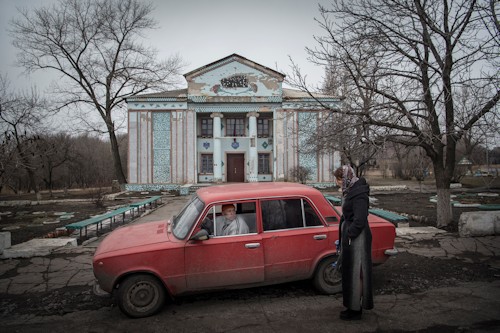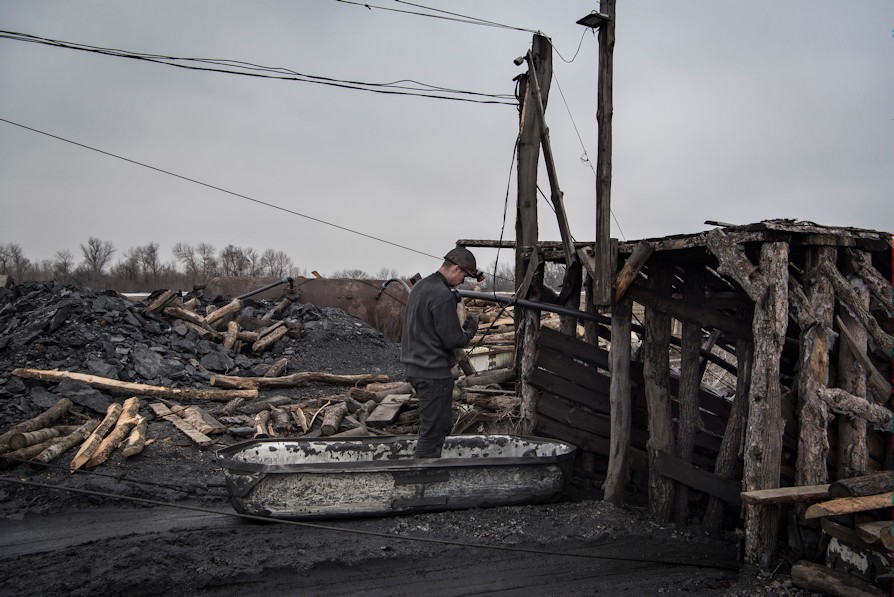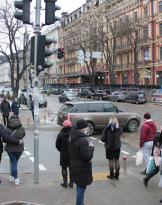If you look for the word "anthracite" on the internet the first item you meet is that of Wikipedia that refers to the color tone.
To get information about the type of coal you need to read a little lower, on the Treccani Encyclopedia page:
Anthracite: Paleozoic fossil coal, consisting of 93-95% carbon; black, compact, bright, it burns with a very short flame due to the almost total absence of volatile matter (low-carbon) and has a high calorific value.
In the Western world, the one that has substituted the productive activities with finance, the function with the form, the politics with the marketing, perhaps it is right that it is so.
In the Donbass to name the word anthracite no one would have an elegant men's suit, a Minotti sofa or a sedan; from those parts with that word unequivocally identifies what is still today called "black diamond" and given the chemical composition and brightness it is easy to understand why.
When you leave for a report in the mines, you know in advance that you'll take that black for a while: it will insinuate itself in the circuits of your camera, in the fibers of the clothes, in the small alveoli of the lungs, under the eyelids. That is why the miners in the city identify them immediately, because they seem to have given the kajal around their eyes. But once it was not just this that distinguished them; once there was status.
 As Yuriy once told me in the car, when you went to the beach, a miner recognized him immediately because he was the one who could guarantee the family a decent vacation.
As Yuriy once told me in the car, when you went to the beach, a miner recognized him immediately because he was the one who could guarantee the family a decent vacation.
This year Yuriy the family at the sea has brought her, as always, but only for three days and making great sacrifices.
In these parts the economic crisis burns more than elsewhere; on the one hand there is the civil war that froze the economy of the entire area and on the other there is the collapse of the price of coal that in a short time has gone from 100 $ to 30 $ per ton.
Life in the mining town is a mixture between the midwest of "Happy Birthday Mr. Grape" and the "Piccolo mondo antico" of Fogazzaro. Pasolini would surely have been able to describe better than me the dozens of squares that are made up before the eyes of the foreign visitor: children who barefoot run to bathe in the pond right in front of the Soviet stele that indicates the name of the city; the ladies conversing along the avenues of the city stopping from time to time to pick a fruit from the trees; the evenings spent chatting in the yard sitting on the tires of the cars around the steaming samovar, while all around it is an uninterrupted chirping of crickets and above the head the celestial vault shines like the coal of the subsoil; and then again the ball games on the street, three vigorous boys who bare shirtlessly shelter their Lada in the garage of the house, a little girl walking along a path wearing the shoes with the mother's heel of ten larger sizes, the meetings in front of the 'emporium for a beer and the train passing slow at night illuminated by street lamps.

It looks like a film set in the open but it's all real.
How real is the descent into the heart of the earth aboard a bathtub. Real is the heat generated by friction that spreads along the back during the descent. Real is the sense of claustrophobia in those narrow tunnels. Real is the noise of the pneumatic hammer that makes rocks vibrate and the wooden sleepers that support the excavated vault. Real is the dust that in a short time saturates the air and shines illuminated by the cones of light of the lights on the helmets of the miners.
Photos, videos and texts can try to tell all this but what will always be missing are the impressions recorded by the senses. Those only Sasha, the blind miners, are able to describe them minutely.
His mental map of the mine is an uninterrupted flow of sensations ordered step by step to the heart of the mine.
Before the war, Sasha worked in a farm together with his wife. As a result of the continuous bombing by paramilitary formations of Pravy Sektor, the farm closed its doors and its family found itself suddenly without income.

But he did not give up, did not stick to the bottle as did Stachanov, who ended his days defeated and forgotten right there.
Many farms in the area continue to work despite the fact that the local population has reduced by 70% and despite the impossibility of selling products to Russia or Ukraine.
Sergej survives thanks to its greenhouses heated by anthracite stoves. To face the winter he just finished downloading 17 tons of coal.
The price is cheap at the moment but this is not enough to make the farmer breathe a sigh of relief as sales are becoming increasingly scarce and more and more are those who are ingenious by setting up "war gardens" on their properties.
But the beautiful season is coming to an end and a new winter is upon us.
All the residents have already stocked anthracite for the winter and soon, between the outside and the inside of the houses, there will be once again 50 ° of difference, because the caloric power of this fossil fuel remains constant over time despite fluctuations in the market.








(photo: Giorgio Bianchi)












